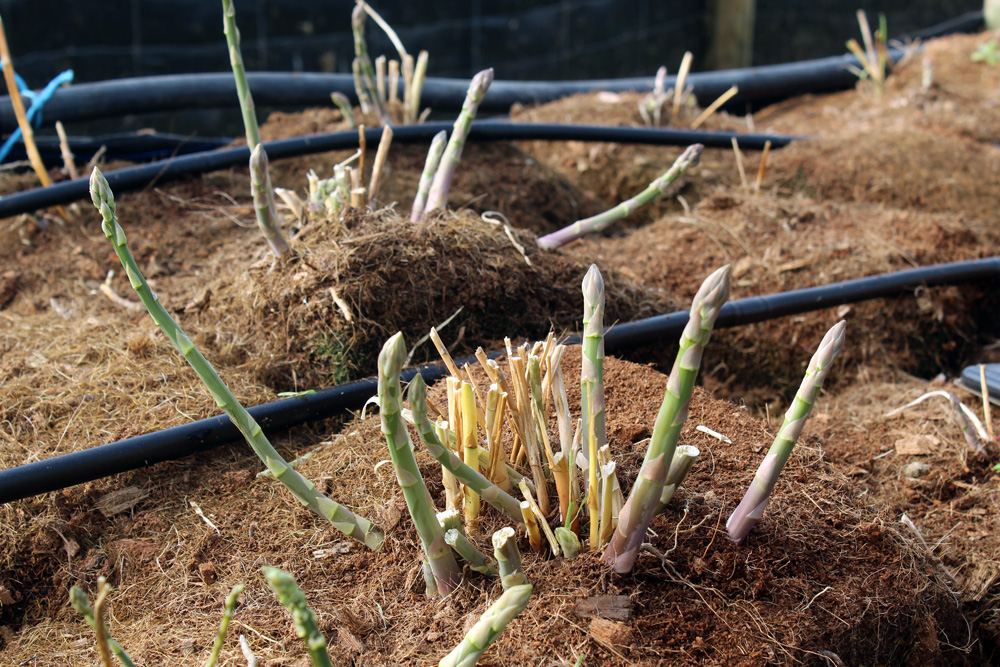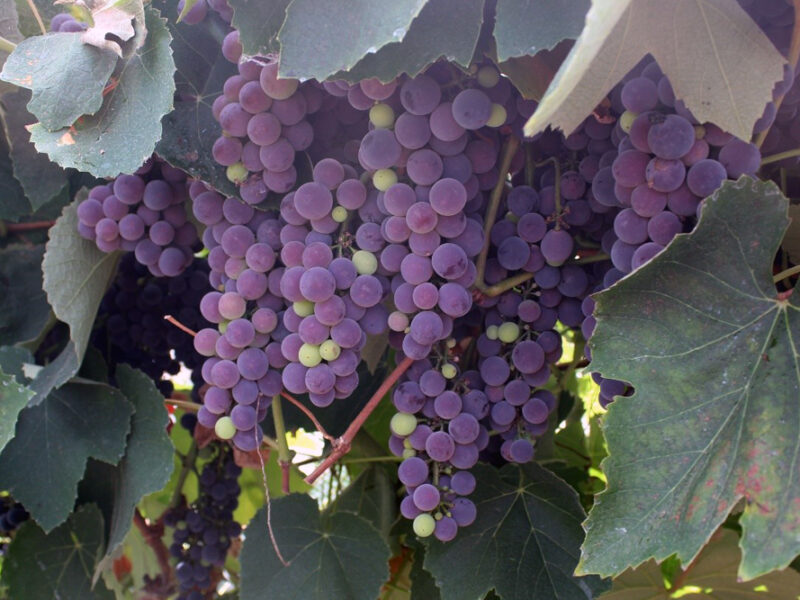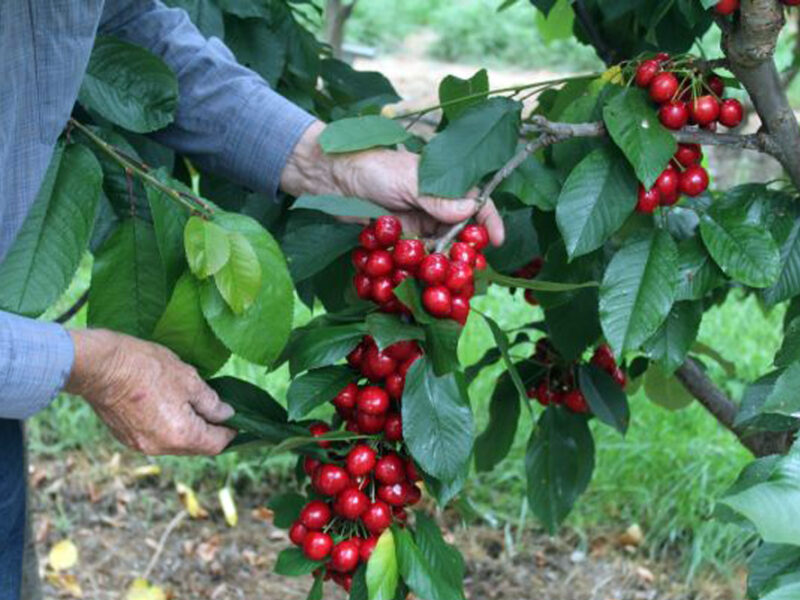In temperate climates asparagus is harvested in the spring—the first of the spring vegetables. In the summer the spears are allowed to grow into fern, which through photosynthesis then produces carbohydrates which are stored in the swollen root system to provide the energy to produce the spears the next spring.
Some 20 years ago, when I first became interested in coir I established a small study in which asparagus plants were grown in a greenhouse in boxes filled with 30 cm deep coir using hydroponics. Two varieties, UC 157 (a green type), and Pacific Purple (a purple tetraploid type), which I also used for producing white asparagus spears. In the autumn irrigation stopped, the fern died (browned off), and was then cut back to the ground. Then the coir was irrigated, and the crown started to produce green or purple or white spears—the latter were produced by putting panda film over the boxes to blanch the spears.

The result was that the (1 year from seed) plants produced an excellent crop of high quality spears, out of season which were sold to a restaurant for 2 to 3 times the normal price of in season asparagus. As a result of this trial I persuaded a local greenhouse berry fruit grower (Alan Bissett) who already grew his strawberries hydroponically in coir modules using a table top system to grow some asparagus in old potato bins (1m x 1m x1m) filled with coir. The thinking being that the potato bins could be transported into a cool store , once the asparagus had become dormant; the dead fern removed, and water applied to the coir, and the cool store (really an insulated room) could be warmed to the asparagus to grow spears. A small amount of light would be required to ensure that the asparagus spears were coloured (green or purple) and no lights were essential (except when harvesting) for the white asparagus.
The system did not work out as the asparagus plants did not receive adequate water or nutrients during the growth phase, however it persuaded Mr Bissett to visit a strawberry grower in UK who was doing a similar thing, but putting the coir into permanently raised beds in a plastic covered greenhouse. He liked what he saw, and the rest is history.
Alan Bissett established in an 8m wide Haygrove high tunnel greenhouse two (1 m wide and 1 m high) raised beds of used coir (from the strawberries) and planted the beds in the spring with 1 year old dormant crowns at a spacing of 30 cm X 30 cm (ie 3 rows to the bed). On the top of the beds was 2 rows of irrigation tube, which supplied the plants with a complete hydroponic nutrients solution. Fern growth was phenomenal, presumably due to the warmer temperatures in the tunnel house, the excellent nutrition and watering, the absence of any fern damage from the wind, and the absence of any fern diseases as the foliage was never wet. In May the irrigation was stopped, and the fern browned off, and was removed. Irrigation started in mid-July and the first spears appeared in late July. Field harvests normally starts in New Zealand in early September. Harvesting ceased in mid-October—when an outdoor crop is at it’s peak (and prices are lowest).

The spears were then allowed to grow into fern, to produce the carbohydrates to be stored in the roots for the next crop of spears. The normal time to stop harvesting in New Zealand is mid-December, and maximum levels of sunlight for photosynthesis occur in December and January (June/July in Northern Hemisphere). Thus there is a large amount of fern available for photosynthesis with the greenhouse crop, and much less for the outdoor crop.
The following year the greenhouse crop produced 1kg/plant equivalent to approx. 20 t/ha! It is possible that a 3rd bed could be grown in the same width of greenhouse. Harvesting is also far easier with the spears all growing at a height of about 1 m, and spear quality is excellent. In New Zealand it is probably possible to harvest 3 crops per year and by incorporating some form of heating in the coir beds obtain production at any time of the year to target the high priced winter season.
The key is clearly coir, hydroponics and protected cropping.
– Dr Mike Nichols



